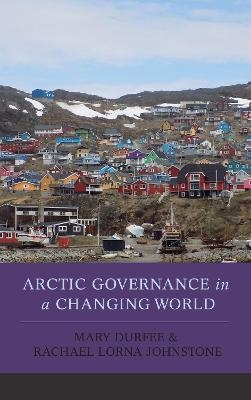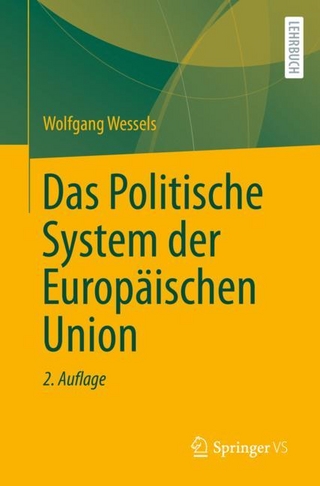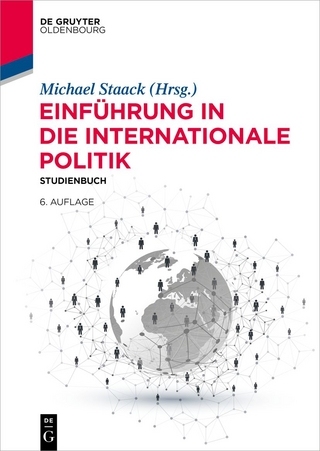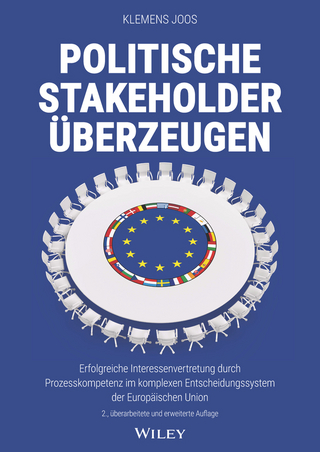
Arctic Governance in a Changing World
Rowman & Littlefield (Verlag)
978-1-4422-3562-5 (ISBN)
This comprehensive text explains the relationship between the Arctic and the wider world through the lenses of international relations, international law, and political economy. It is an essential resource for any student or scholar seeking a clear and succinct account of a region of ever-growing importance to the international community. Highlights include:
•Broad coverage of national and human security, Arctic economies, international political economy, human rights, the rights of indigenous people, the law of the sea, navigation, and environmental governance
•A clear review of current climate-related change
•Emphasis on the sources of cooperation in the Arctic through international relations theory and law
•Examination of the Arctic in the broader global context, illustrating its inextricable links to global processes
Mary Durfee is professor emerita at Michigan Technological University. She is a past Fulbright and Annenberg Scholar and has coauthored a book on international relations theory with James N. Rosenau, Thinking Theory Thoroughly, 2nd ed. (2000). Rachael Lorna Johnstone is professor of law at the University of Akureyri, Iceland, and at the University of Greenland. She is a specialist in polar law and international human rights law. She is the author of Offshore Oil and Gas Development in the Arctic under International Law: Risk and Responsibility (2015).
Chapter One What the Arctic Tells us about World Affairs
Cooperation Under Uncertainty
Governance
Cooperation
Common v More Complex Representations of Arctic Affairs
The Arctic and its Indigenous Peoples in World Affairs
The Arctic Region and Policy Tools Used to Manage it
Regions are Created by People through Discourses
Governing the Arctic: International Law
What the Arctic Tells Us about International Relations Theory
Assumptions of Realism, Liberalism, and Critical Theories
Regime Theory
Arctic Puzzles for International Relations Theorists
One Cannot Explain the Arctic without International Law
The Arctic has Weak Institutions and Strong Cooperation
The Arctic Illustrates Creative Uses of Sovereignty
Human Security Rivals National Security
Climate Change Matters in Governance Efforts.
Organization of the Book
Chapter Two: A Natural and Human History of the Arctic
The Natural History of the Arctic
The Physical Geography of the Arctic
Cooling and Warming in the Arctic
Changing Atmospheric Chemistry
Greenhouse Gases and Permafrost
Sea Ice
Glaciers and Ice Sheets
Arctic Warming and Ocean Currents
Biodiversity in the Arctic
Settlement of the Arctic
Eurasia
Migrations to North America
Economic Life
Viking Exploration
The Rise of the Sovereign European Arctic States and Colonization of the Arctic
Early Formation of the Arctic States of Europe
Rise of the Modern System of States
Mapping the Arctic, Gaining Control
Colonization
Changing State Borders through War
The Napoleonic Wars
World War I
World War II
Hot War to Cold War
International Cooperation
Conclusions
Chapter Three: Arctic Players
The Indigenous in the Arctic
Arctic States
The United States
Canada
The Kingdom of Denmark
Iceland
Norway
Sweden
Finland
Russia
Non-Arctic States
International Organizations and Fora
The European Union
The Arctic Council
The Arctic Five
The Barents Euro Arctic Region (BEAR)
Other Regional Fora
Global Fora
Non-Governmental Organizations
Corporate Interests
Other Stakeholders
Conclusions
Chapter Four: Securities in the Arctic
Security or Securities
Securities are Interwoven
Making Humans Secure
Logics of Security
Current Strategies to Understand and Manage Securities
National Security
How Secure is National Security in the Arctic?
Power and Hegemonic Transitions: the Rise of China
Geo-Strategy
Security Dilemmas
From Security Dilemmas to Arms Racing
Hot Conflict in the Arctic? Two Unlikely Scenarios
Conclusions
Chapter Five: Arctic Economies and Resources
Pillars of Arctic Economies
The Subsistence Economy
The Formal Economy
The Transfer Economy
Economic Sectors
The Three “D’s
Decoupling
Dependency
Diversification
Arctic Resources
Arctic Economies
Competition between Different Sectors
Social Impacts of Large-Scale Resource Extraction
Interest Groups and Influences Inside and Outside the Arctic
The Impacts of Climate Change on Arctic Resources
Conclusions
Chapter Six: The Political Economy of the Arctic
Economic Globalization and Modern Capitalisms
Three Flavors of Capitalism
Economic Development National Strategies
Finance and Banking
Free Trade
NAFTA
Supply and Value Chains
A Perfect Trade Storm Hits Canadian Inuit
Recent Neoliberal Trade Negotiations
CETA and CPTPP
CETA Impacts
Impact on Small and Medium Enterprises
Social Impacts
Conclusions
Chapter Seven: Human Rights and the Rights of Indigenous Rights in the Arctic
Human Rights or Indigenous Rights?
How do Human Rights Impact Decision-Making?
United Nations Instruments and Mechanisms
The Council of Europe
The Inter-American System of Human Rights Protection
Responsibility for Human Rights and the Rights of Indigenous Peoples
Human Rights and Indigenous Issues in the Arctic
The Right to Self-Determination and Political Participation
Land and Resource Management
The Right to Culture
Industrial Development and Rights to Participation
Economic and Social Rights
Conclusions
Chapter Eight: Law of the Sea in the Arctic
The UN Convention on the Law of the Sea (UNCLOS)
Maritime Zones
Baselines
The Territorial Sea and the Contiguous Zone
The Exclusive Economic Zone (EEZ)
The Continental Shelf
The High Seas
The Area Beyond National Jurisdiction
Delimitation Between Adjacent or Opposite States
Maritime Zones around the Svalbard Islands
States’ or Peoples’ Rights over the Seas
The Internationalization of the Arctic Ocean and Seas
Conclusions
Chapter Nine: Arctic Shipping and Navigation
Freedom of Navigation
Arctic Shipping Today
The Northern Sea Route
Arctic Marine Tourism
Sea-ice and Other Challenges to Arctic Shipping
Global Interest in Arctic Transit Shipping
Constraints to Freedom of Navigation
Arctic Controversies: Straight Baselines and the Question of ‘International Straits’
Are the straits in the NWP ‘international’?
Does the NSR contain international straits?
Managing the disputes: agreeing to disagree
Environmental and Human Security: Vessel-Source Pollution and Safety at Sea
International and Domestic Efforts to Control the Impacts and Reduce the Risks
The Arctic Search and Rescue Agreement and the Agreement on Marine Oil Pollution Preparedness and Response
The Polar Code
Conclusions
Chapter Ten: Environmental Protection in the Arctic
Principles of International Environmental Law
The Environmental Impact Assessment
The Precautionary Approach
Conservation of Biological Diversity
Sustainable Development
Arctic Environmental Challenges
Climate Change
Long-Range Contaminants
Protection and Preservation of the Marine Environment
Human Rights and the Environment
Implementation and Enforcement of International Environmental Law
Conclusions
Chapter Eleven: The Future of Arctic Governance
Material and Ideational Connections
Arctic Puzzles for International Relations Theorists
One Cannot Explain the Arctic without International Law
The Arctic has Weak Institutions and Strong Cooperation
The Arctic Illustrates Creative Sovereignty
Human Security Rivals National Security in Importance
Climate Change Matters in Governance Efforts
Questions for Further Reflection
| Erscheinungsdatum | 14.06.2017 |
|---|---|
| Reihe/Serie | New Millennium Books in International Studies |
| Verlagsort | Lanham, MD |
| Sprache | englisch |
| Maße | 156 x 238 mm |
| Gewicht | 535 g |
| Themenwelt | Recht / Steuern ► EU / Internationales Recht |
| Sozialwissenschaften ► Politik / Verwaltung ► Europäische / Internationale Politik | |
| Sozialwissenschaften ► Politik / Verwaltung ► Vergleichende Politikwissenschaften | |
| Wirtschaft ► Volkswirtschaftslehre | |
| ISBN-10 | 1-4422-3562-4 / 1442235624 |
| ISBN-13 | 978-1-4422-3562-5 / 9781442235625 |
| Zustand | Neuware |
| Haben Sie eine Frage zum Produkt? |
aus dem Bereich


